A Guide to Choosing Proper Curtain Length for Your Windows
Should it touch the floor or not? This is the hardest decision to make when it comes to choosing the best curtain length. Drapes can entirely transform the interior, and their size plays a crucial part in the way they look.
But what length is the best for your curtains, and how do you measure it properly?
I have all the answers here in my guide.
Table of Content
What Is the Standard Curtain Length?
The curtain length is usually identified depending on the height of the ceiling. However, you can find drapes in stores that come in standard lengths: floor curtains, cafe, and puddle.
The first one is when the drapes go all the way to the floor. With cafe size, the curtain covers only the window and doesn’t go lower. And the puddling blinds, as the name implies, are long enough to create a puddle of fabric on the floor.
But if we want to talk numbers to identify the standard curtain lengths, they are 84, 96, and 108 inches long.
However, before choosing the size of the drapes, I’d recommend measuring the distance at which they should hang from the floor first. And that’s exactly what we’re going to tackle now.
At What Distance Should Your Curtains Hang from the Floor?
To understand the best distance for the blinds to hang from the floor, you need to do some measurements. Firstly, take a steel tape measure and, starting from the floor, estimate the height where you’ll hang the rod.
Usually, the rod should be placed 4 to 6 inches above the window frame. Ideally, you want to have the curtain go all the way down, barely touching the floor.
So, if the window frame height is around 8 feet, it’s recommended to get drapes with a length of 9 feet. This way, they will hang close to the floor without touching it. You can see a perfect demonstration in this video:
However, if you’re going for a more decorative look and want to have the rods directly below the ceiling, you need to measure the length of the curtain from ceiling to floor.
8 Common Curtain Length Types
Drapes can be of different lengths, long enough to touch the floor or window sill. If you’re looking for the best size for your curtain but haven’t found one yet, keep on reading.
Below, I’m sharing the eight standard curtain lengths for your home design. I will also share photo examples for each type to ease your choice.
So, without ado, let’s dive in.
Type #1: Floor
Floor curtain length is one of the most modern-looking options, providing stylish decor to your loft or house. This style is often used with eyelets for hanging, therefore may also be called eyelet curtains.
Usually, drapes of this length are half an inch above the floor, so they are barely touching it to avoid wrinkles at the bottom of the curtain. You can see it in the image below.
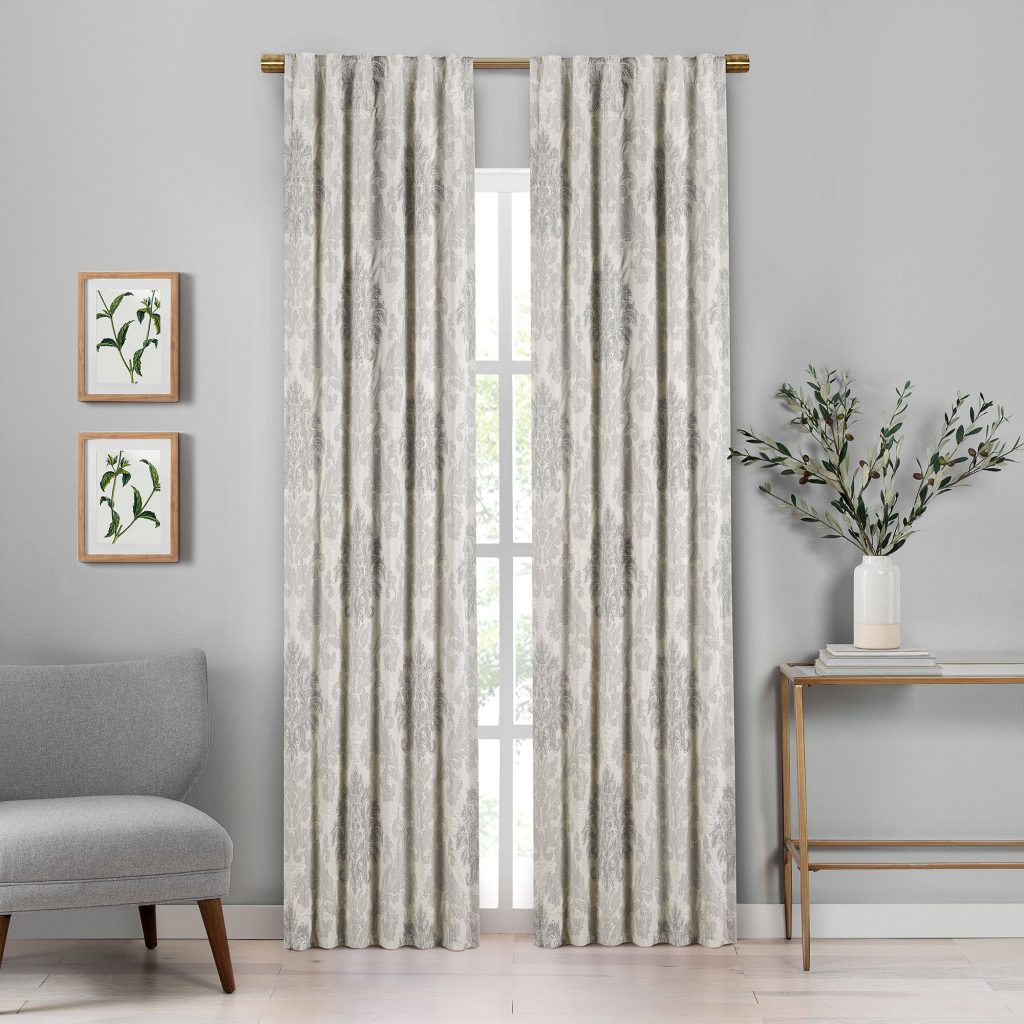
This style looks fantastic with curtains that go down from the ceiling, making it look visually higher. So, if you’re looking for stylish and smooth drapes, this length will be ideal for you.
The next one in line is a mid-length curtain option.
Type #2: Apron
Apron curtain length is a mid-length option. With this style, the curtains don’t touch the floor and end one inch below the window apron. You can see an example of apron-length drapes in the below image.

This style is good if you don’t like to get your curtains touching the floor and getting dusty. Apron length is also a great option if you have furniture near the window since full-length blinds may get stuck underneath when you try to move them.
Now, let’s take a look at a shorter style of drapes.
Type #3: Sill
Sill curtain length is one of the shortest options for decorating the interior. Usually, blinds this long end around 1.5 inches above the window sill. This is the perfect size option if you’re looking for drapes that don’t cover the heater. You can check out an example of sill-length in the image below.
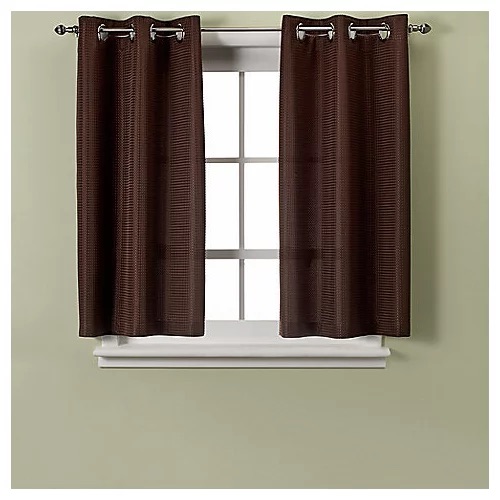
As you can see, such blinds are ideal for small windows and can serve as a means of interior decor as well.
The name of the next curtain option may confuse you, but no, it’s not a piece of clothing. Read on to find where its name comes from.
Type #4: Trouser
Trouser curtain length is usually a few inches longer than floor-length curtains, so it’s wrinkling on the floor but at the same time not creating a puddle. However, this style has one disadvantage – the dust at the bottom due to its length.
Trouser drapes bend at the bottom, providing a fuller look, as seen in the image below.
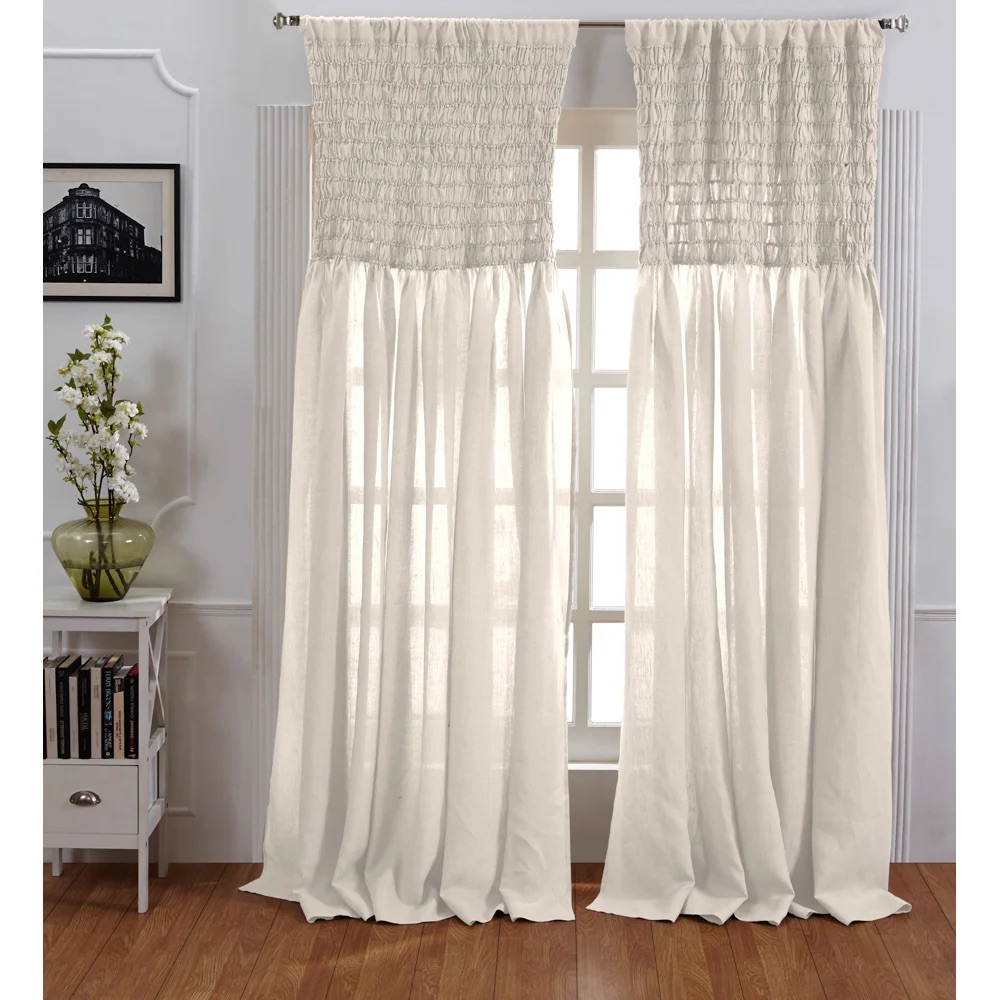
This style looks especially good with curtains made of thicker materials which you can find at any drapers.
Let’s carry on with the next option that may look minimalistic at first but has a slight twist at the bottom.
Type #5: Breaking
The breaking curtain length is usually half or an inch longer, so it slightly bends at the bottom. This style provides an elegant and stylish look to the interior.
It’s easy to confuse breaking drapes with the trouser length, but breaking is shorter, and the bends are barely noticeable. The only drawback of this style is that it easily collects dust since it’s touching the floor.
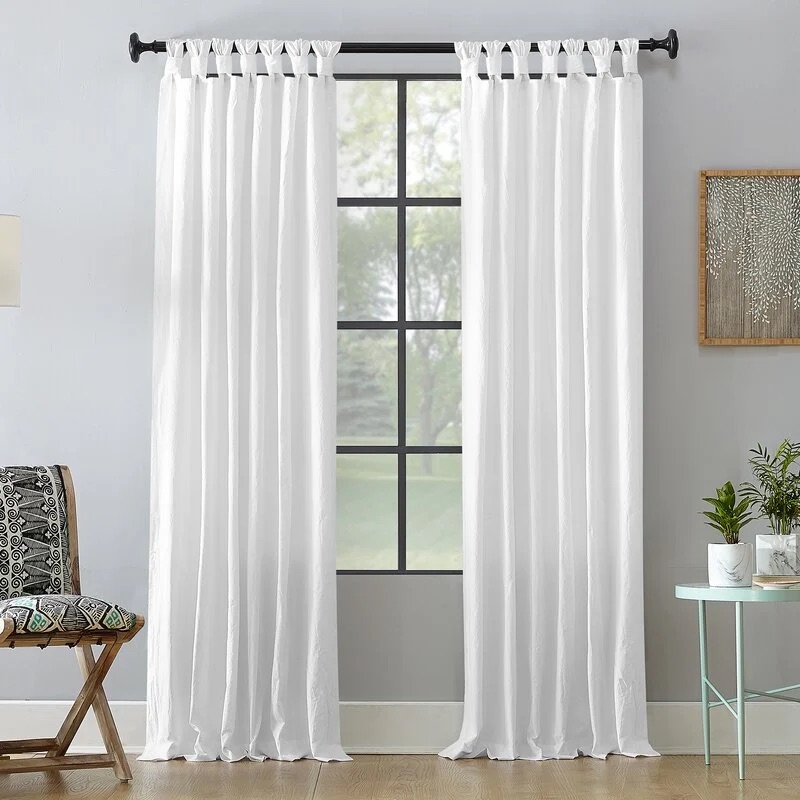
I’ve picked an image that perfectly demonstrates all the beauty of this curtain style. Oftentimes, it is created using cotton or linen drapes that exude a cozy atmosphere.
Moving on to the biggest length type.
Type #6: Puddle
Puddle curtain length is the longest you can choose. With this style, the drapes are so long that they create a pile on the floor resembling a puddle. This is where it got its name.
I’ve selected an image that perfectly demonstrates the length of puddle curtains.

This style looks good in large rooms with enough space for the curtains to puddle up on the floor. So, if you’re okay with drapes getting in your way, you’ll have no trouble with it.
The next one in the line is my personal favorite – the Kiss style.
Type #7: The Kiss
The Kiss curtain length is long enough to reach the floor covering even the baseboard but barely touching it. So, the drapes reach the floor but remain straight and don’t bend at the bottom, as you can see in the image I provided below.
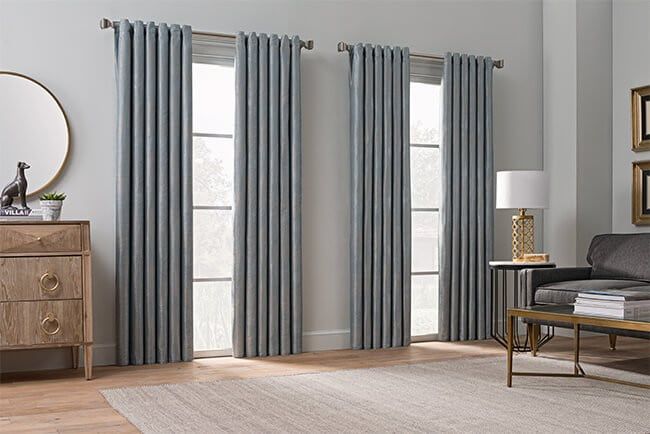
This style is my favorite option since it provides a minimalist yet chic look to the interior. It’s perfect for decorative purposes, especially with tall ceilings like in two-story foyers.
The only con of this style is that it’s challenging to find the ideal length to achieve the desired result. But if you’re looking for a long curtain with a neat design, this can be exactly what you’re looking for.
Finally, the last one on my list is the cafe-length drapes.
Type #8: Cafe length
Cafe length curtain is the one that covers the window only partially. Usually, this style can be seen in cafes to cover the visibility from the outside but, at the same time, keep the natural light inside. I’ve selected an image that perfectly demonstrates this curtain style below.
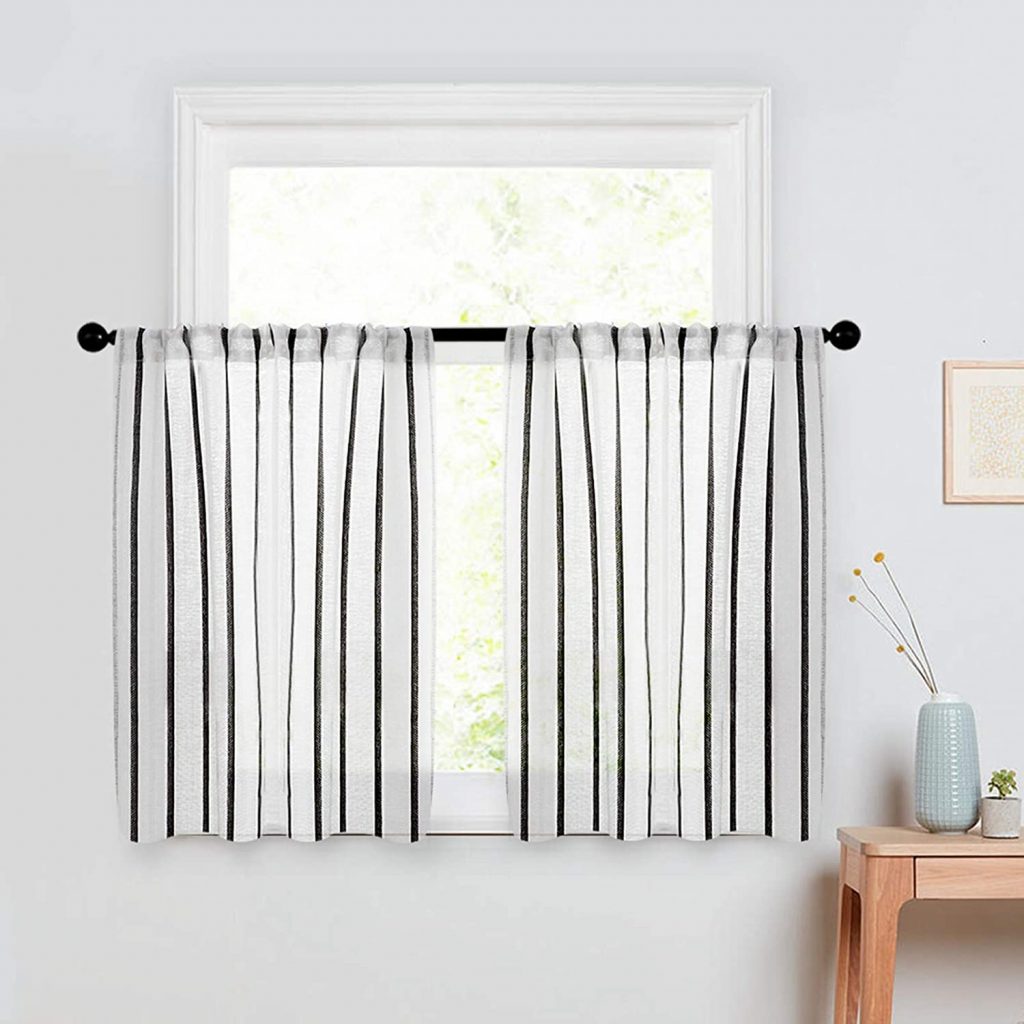
If you’re looking for full-coverage drapes, this is not a suitable option. Cafe-length curtains can be made of two layers: the first one can be shorter and fixed on top of the window, and the second layer covers the bottom part of the window.
This style looks cute on kitchen windows as well.
8 Types of Curtains and Their Perfect Lengths
Did you know that the length of the curtain may depend on its type as well? That’s true, each type of drapes has a size ideal for its design.
Below, I’m sharing eight types of curtains and their perfect lengths with images for better visualization.
Type #1: Single-panel
Single-panel drapes are often used for decorative purposes. It’s a single-piece curtain usually pulled to one side of the window, leaving a part of it open:
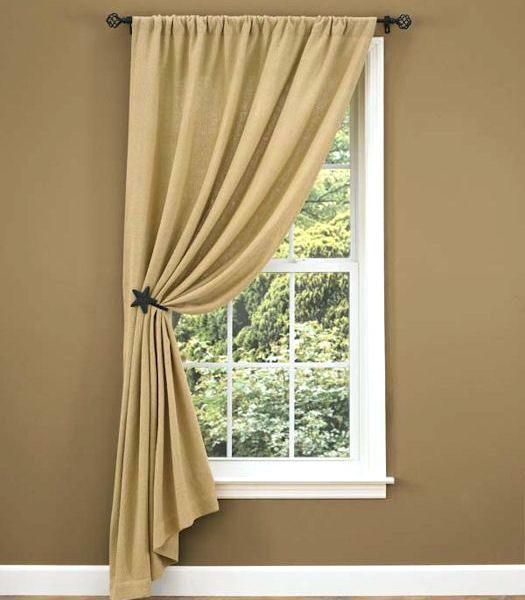
Typically, single-panel curtains should be long enough to hang down to the floor. Whether it’s fixed on one side or open to cover the entire window, the length of the drapes should be enough to reach the floor.
Now let’s multiply this option and see what we get.
Type #2: Double-panel
Double-panel curtains are two pieces of fabric on either side of the window. You can style double-panel blinds in multiple ways. You can leave them as they are, pull and fix them on the sides, or tie them in the middle, just like in the image below.

As for the length, double-sided blinds are pretty versatile and look good in any size. You can get them to reach the floor or cover only the window and leave it mid-length – it’s completely up to you.
Up next is the blackout curtain and its perfect length.
Type #3: Blackout
Blackout drapes cover up the entire window, letting any sunlight get inside. Usually, the material of these curtains is quite thick to block the light entirely:
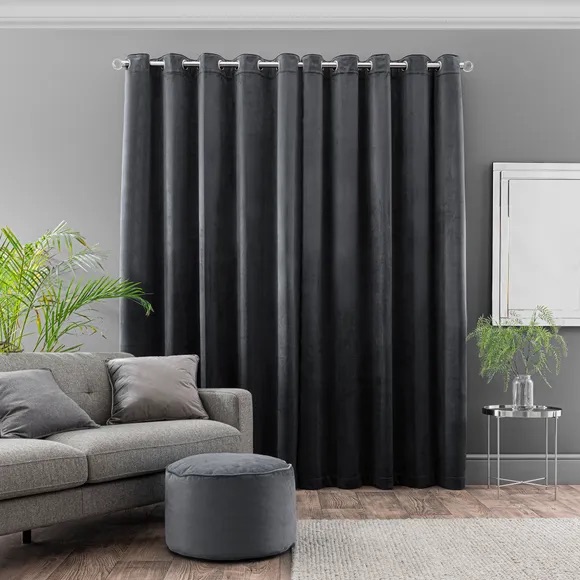
Since its main feature is to prevent the light from entering and create utmost privacy, the curtains are supposed to go that way to the floor to conceal everything. Otherwise, it won’t block the sunlight completely, and some bits will still peek through it if it’s shorter.
For the next option, I’ve selected the most unique curtain design, in my opinion.
Type #4: Window scarf
Window scarf shades, also known as draping curtains, are mainly used for decorative purposes. They serve as an extra feature to add some stylistic touch to your windows. Window scarf drapes can be with two ends hanging on either side or just one end on one side of the window.
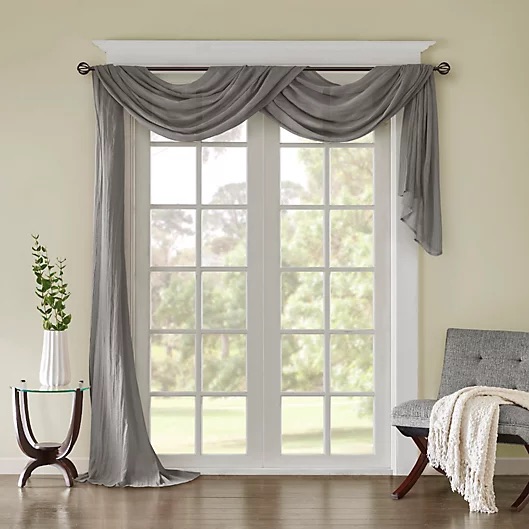
As for the lengths, it’s not a must for window scarf curtains to touch the floor, but it depends on the decorative look you’re aiming for. If you want it to hang from one side of the window, you can keep one side long enough to touch the floor and the other one far off the floor. It can be short as well, depending on the length of the windows.
Off to a more extravagant look with Valance-type drapes.
Type #5: Valance type
Valance-type curtains are yet another decorative style. These blinds are used to decorate the interior by putting an emphasis on the windows.
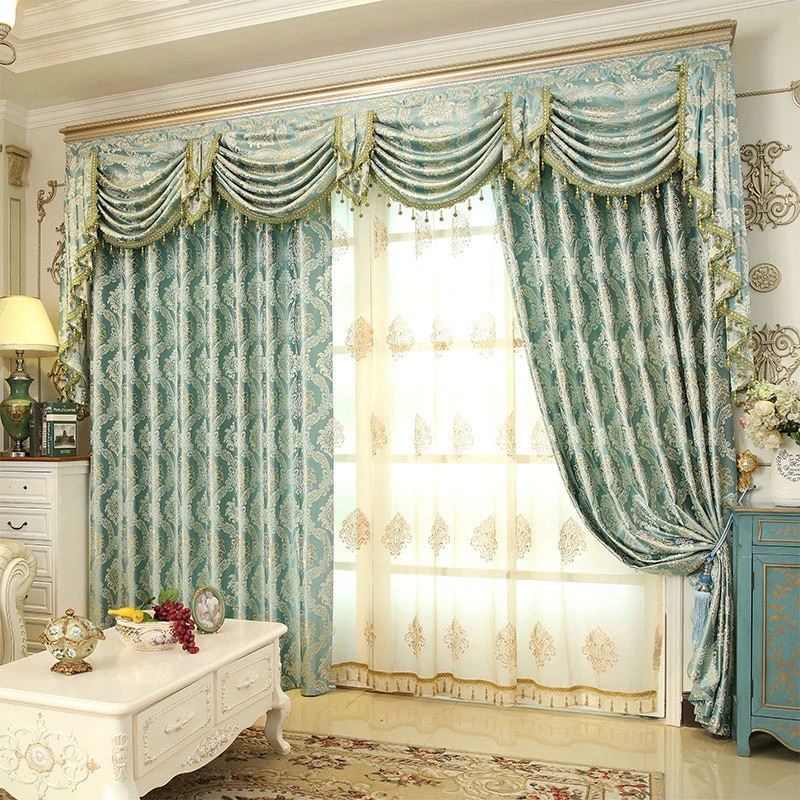
Usually, Valance-type curtains can be of different lengths. They can be long enough to reach the floor, as in the above image. Or they can be short to reach the bottom of the window and not beyond.
Now let’s find out what a window tier curtain is and what length it should have.
Type #6: Window tier
Window tier drapes, also known as cafe curtains, usually cover only a small fraction of the window. They can come in one or two pieces to cover the top and bottom parts of the window. I’ve picked a good example of this style in the image below.
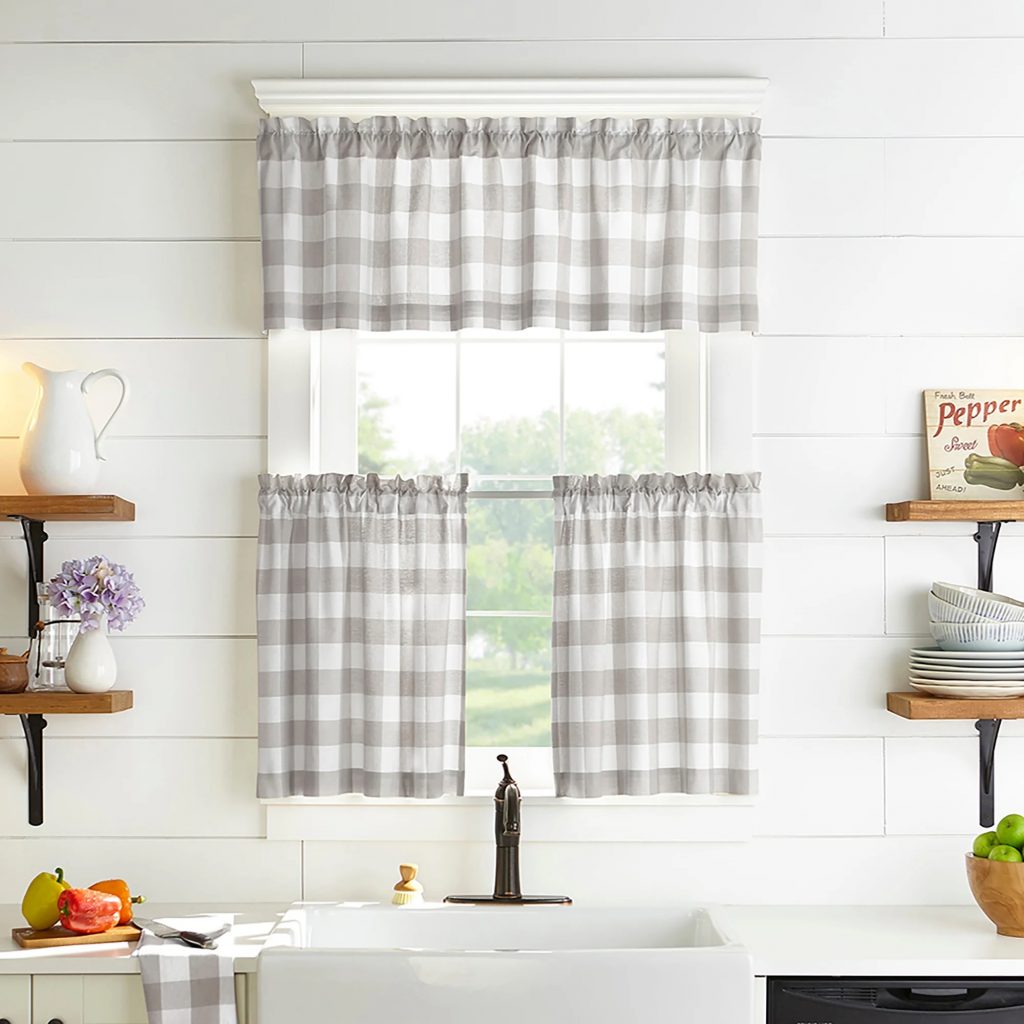
The main feature of these drapes is that they cover only a part of the window and don’t go beyond the window’s length. Hence, window tier curtains shouldn’t reach the floor.
The next option is the most sophisticated in design.
Type #7: Window treatment set
The window treatment set comprises multiple styles of drapes. It usually consists of a double-panel with a scarf or a Valance to add a stylistic touch. Below, you can see a perfect demonstration of it.
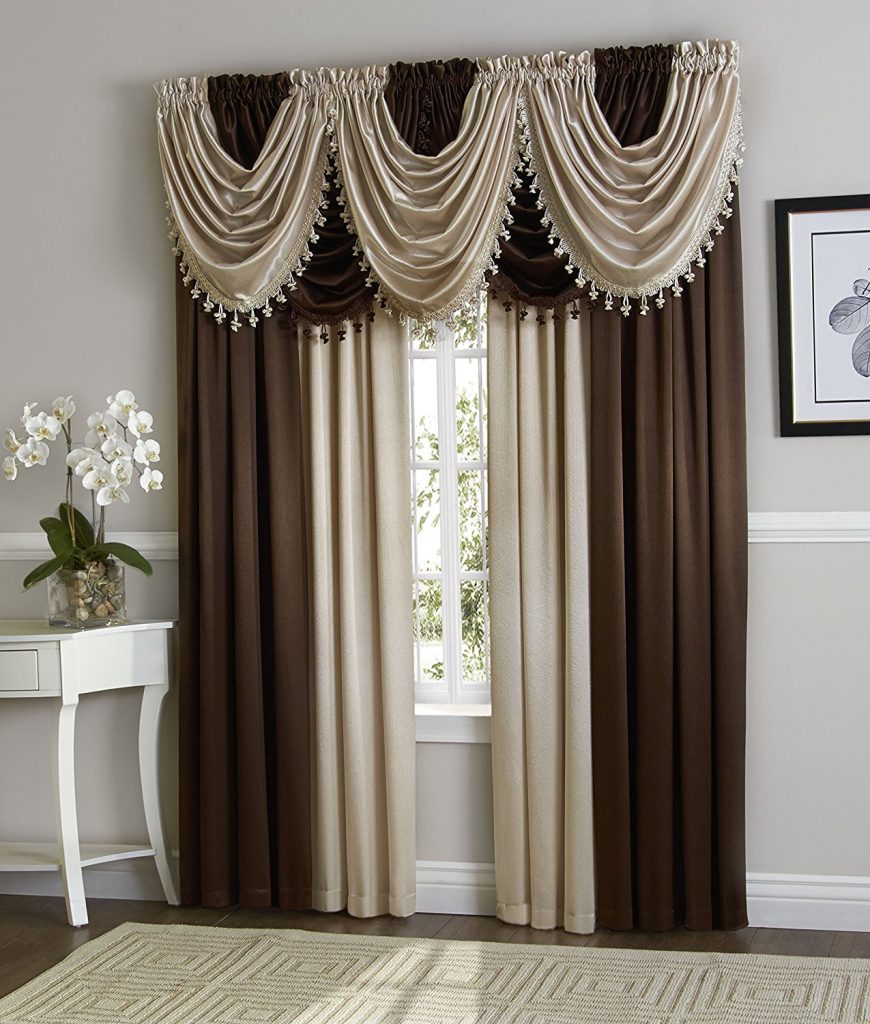
As for the length, the window treatment set curtain should touch the floor. Otherwise, it will look clumsy with all the full details at the top.
Lastly, let’s find out the final drapes type and the best length for it.
Type #8: Sheer and semi-sheer
A sheer curtain is a see-through style, while a semi-sheer curtain, as its name hints, is a partially see-through option. You can see an example of this style below.
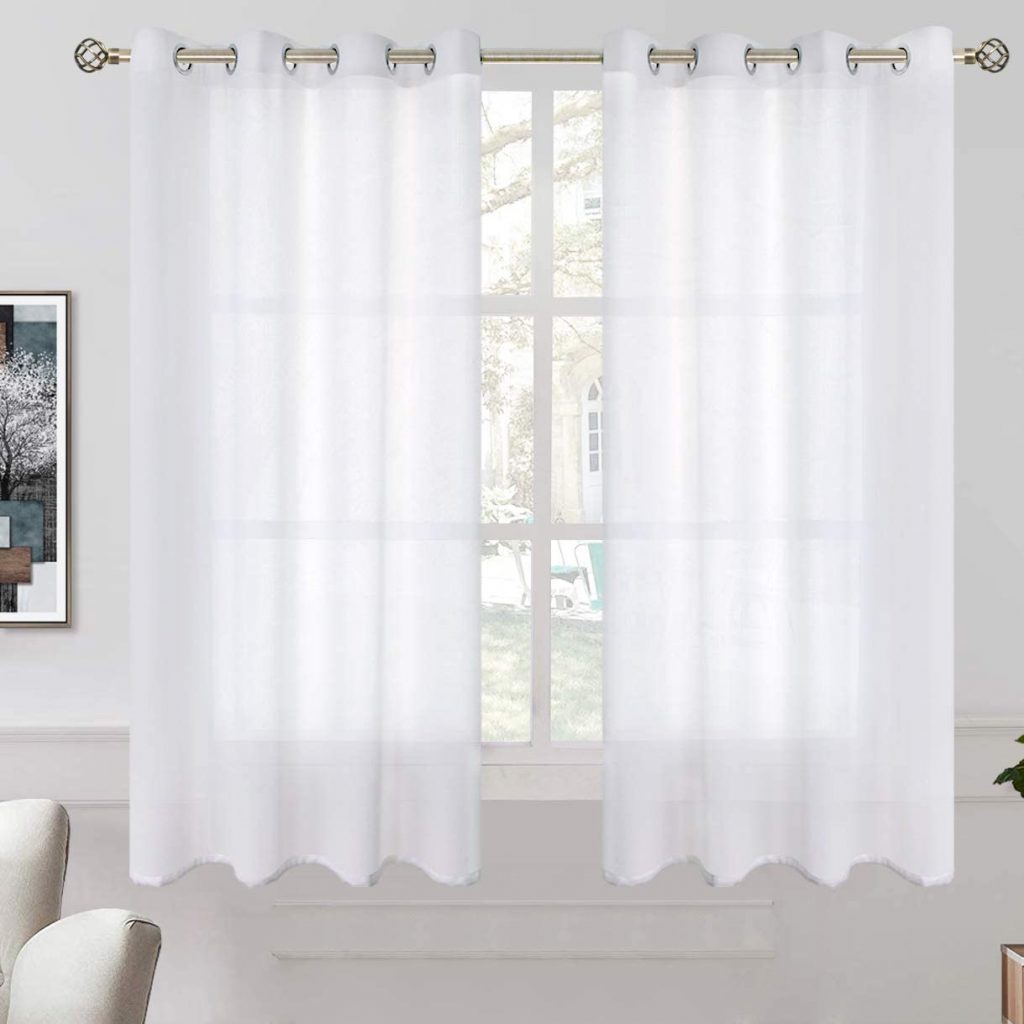
Sheer or semi-sheer curtains can be of any length, depending on the size of the windows and interior design.
Best Curtain Types for Different Rooms
Now that you know what types of drapes are there and what’s their best length, it’s time to learn which of them fits each room in your house best.
1) Living room
The living room is where you can experiment with different styles of drapes to match your overall interior design. The classic choice for living room curtain length is usually the floor, as long curtains provide a more elegant and put-together look. You can see an example in the image below.
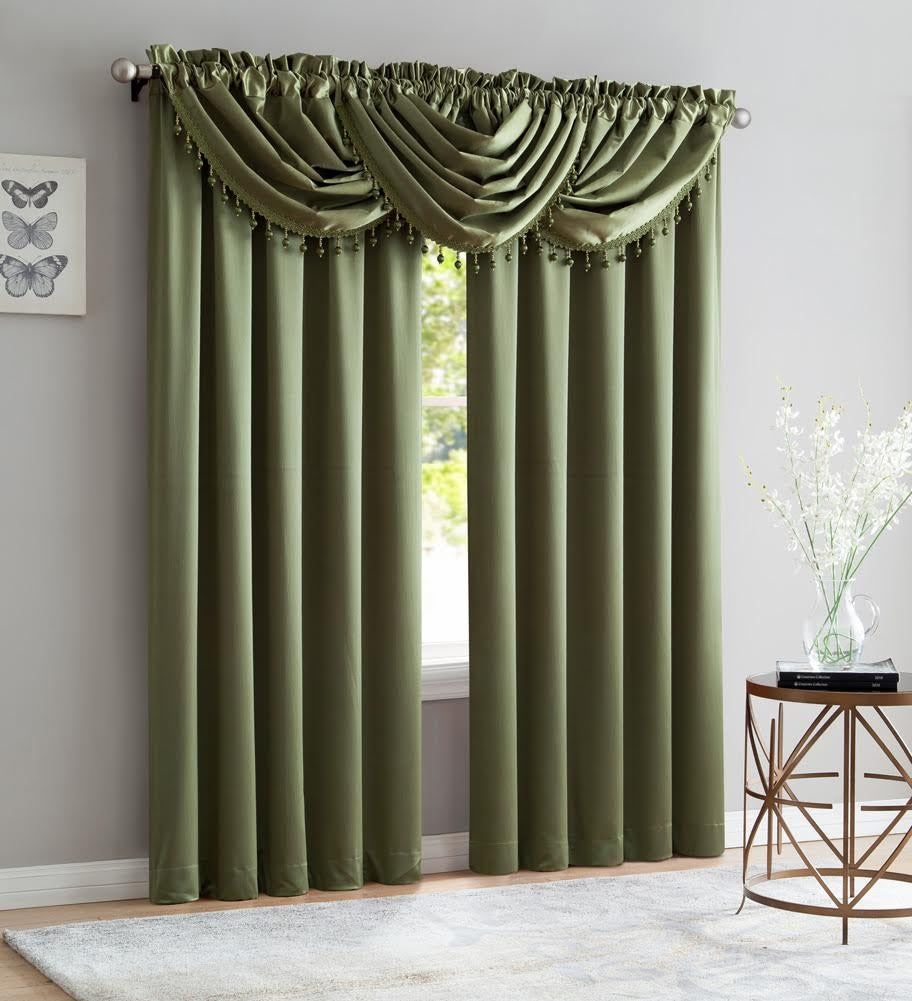
As for the style of curtains in the living room, you can choose from Valance drapes, window scarfs, double-panel blinds, or a window treatment set.
2) Kitchen
For the kitchen area, long curtains are not recommended since they can get dirty easily. Besides, they are quite inconvenient to have in the kitchen, especially if the space is small.
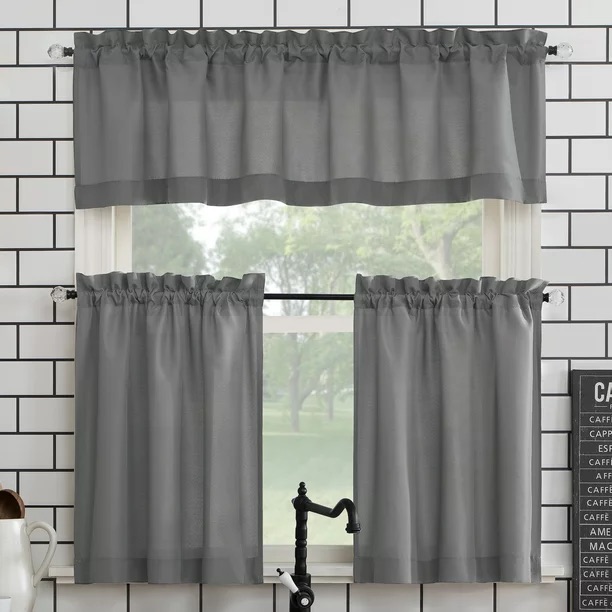
The best curtain options for the kitchen are cafe-length and sill-length. These drapes do not go below the window, therefore, they are the perfect choice for this room.
3) Bathroom
The bathroom curtain style is similar to kitchen drapes, besides, we’re not talking about shower curtains. Bathrooms usually have small windows, hence, the drapes should correspond to the size. Long curtains are very inconvenient to have in bathrooms where there’s too much humidity.

The best option for a bathroom curtain is the sill length that covers the window entirely without going below.
4) Bedroom
Bedroom is the place in your house where you should feel relaxed and comfortable, and drapes play a vital role in setting a cozy and calm atmosphere in this space.
The best for the bedroom are the floor-length curtains since, for a good night’s sleep, complete darkness is the best setting. This is where blackout curtains come to help.
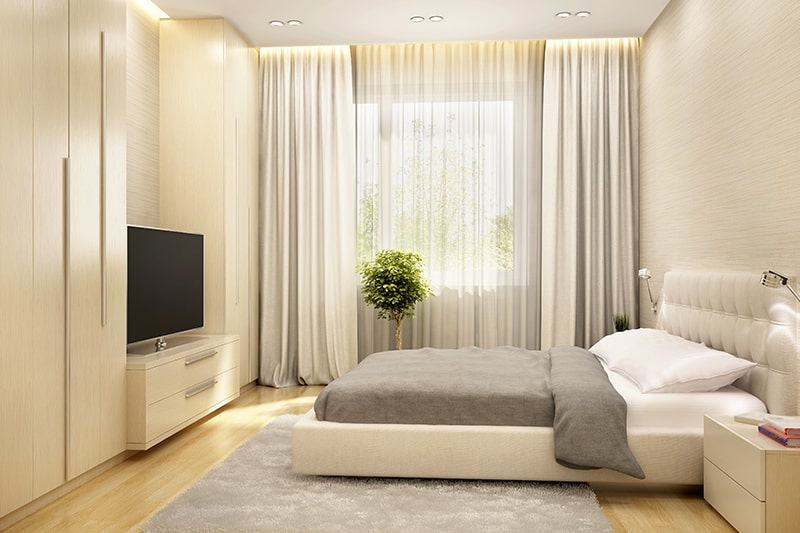
For maximum darkness, the blinds should reach the floor to eliminate any sunlight sneaking through.
Long curtains for the bedroom are the best choice, so make sure to pick among the trouser, breaking, puddle, the Kiss, and blackout styles.
Conclusion
And that’s a wrap to my complete guide on choosing the correct curtain length for your house.
Let’s briefly sum up what we’ve covered so far:
- Curtains come in various sizes depending on their style and window size.
- Different rooms in your house should have curtains of different sizes and styles.
- Before buying a curtain, you should make proper measurements.
Following the measuring tips and all the styles I’ve shared above will help you find the best curtain length for your house.
Was this article helpful? Check out my blog, where I regularly publish exciting guides and articles on various topics.










